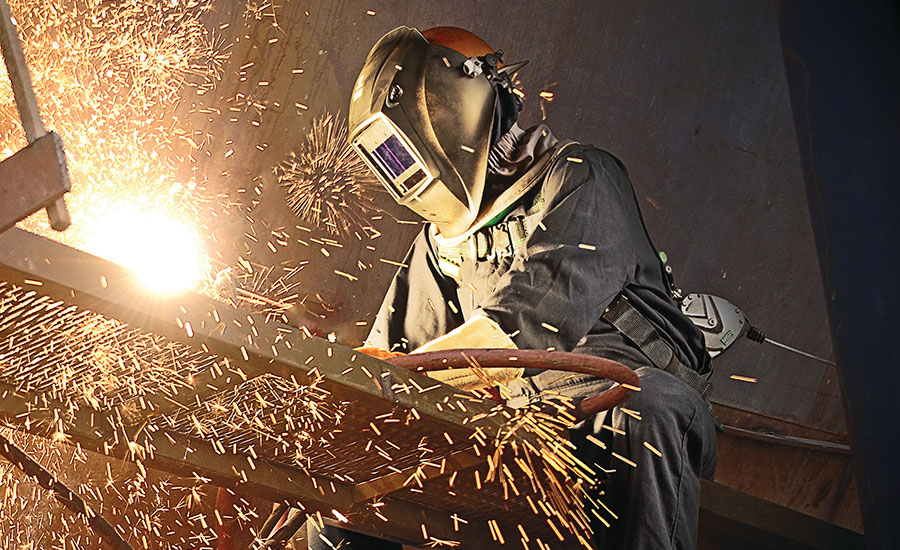Optimizing Your Welding WPS: Strategies for Improved Performance and Performance
Optimizing Your Welding WPS: Strategies for Improved Performance and Performance
Blog Article
The Ultimate Overview to Welding WPS Procedures: A Comprehensive Introduction for Welders
In the complex globe of welding, Welding Procedure Requirements (WPS) offer as the backbone of making sure high quality, consistency, and security in welding operations (welding WPS). As we delve right into the various parts of a WPS and discover the intricacies of credentials and accreditation, we will uncover the essential function these procedures play in the realm of welding.
Significance of WPS Procedures
Comprehending the value of Welding Treatment Specifications (WPS) procedures is essential for guaranteeing the top quality and integrity of welded structures. WPS treatments offer as a roadmap for welders, laying out the essential steps, criteria, and materials required to accomplish an audio weld. By sticking to WPS standards, welders can guarantee uniformity in their work, leading to structurally audio and trustworthy welds.
One of the primary reasons why WPS procedures are essential is their role in preserving weld high quality and honesty. Adhering to the specified welding parameters and strategies laid out in the WPS assists protect against flaws such as porosity, cracking, or incomplete blend, which can jeopardize the strength and toughness of the weld.

Components of a WPS
A Welding Treatment Specification (WPS) usually makes up essential elements that detail the specific needs for carrying out a weld, guaranteeing consistency and high quality in the welding process. The vital elements of a WPS include crucial variables such as base metals, filler steels, interpass and preheat temperature levels, welding procedures, protecting gases, welding positions, and post-weld heat treatment needs.
Base steels refer to the products being joined, while filler steels are made use of to load the void in between the base steels throughout welding. The welding procedure describes the particular method to be utilized, whether it's gas metal arc welding (GMAW), secured metal arc welding (SMAW), or one more approach. Welding positions define the positionings in which welding can be executed.

Certification and Certification
Having developed the important elements of a Welding Treatment Spec (WPS), the emphasis now shifts towards the vital facets of qualification and accreditation in welding techniques.

Accreditation, on the other hand, is the formal recognition of a welder's qualifications by a relevant accreditation body or organization. Welding accreditations are normally based upon the details welding processes, why not try here products, and positions a welder is certified to work with. Holding a legitimate welding certification demonstrates that a welder meets sector standards and is skilled to do welding jobs to the needed specifications.
Developing a WPS
To create a Welding Treatment Requirements (WPS) that fulfills sector standards, cautious consideration of welding processes, materials, and operational criteria is important (welding WPS). The primary step in developing a WPS is to identify the welding procedure to be utilized, such as gas steel arc welding (GMAW) or shielded steel arc welding (SMAW) As soon as the welding procedure is identified, the next essential element is choosing the suitable materials, taking into consideration aspects like base steel type, thickness, and joint design. Functional criteria such as welding current, voltage, travel rate, and securing gas make-up must also be carefully specified in the WPS.

Executing and Monitoring WPS
Upon finalizing the extensive Welding Procedure Specification (WPS) that meticulously information welding processes, materials, functional criteria, and quality control actions, the focus changes to properly implementing and keeping an eye on the established procedures. Application includes ensuring that all welders associated with the job know with the WPS and follow it carefully throughout the pop over here welding procedure. This calls for supplying sufficient training and guidance to guarantee adherence to the defined procedures. Keeping track of the WPS includes continual oversight to validate that welding tasks straighten with the documented requirements. Examinations, screening, and quality assurance steps are necessary parts of the monitoring process to identify any type of deviations or concerns promptly. Routine audits and testimonials of the welding treatments aid in keeping consistency and top quality throughout the task. Reliable implementation and monitoring of check these guys out the WPS are important for ensuring the honesty, toughness, and safety of the bonded joints, ultimately contributing to the overall success of the welding job.
Final Thought
In final thought, understanding and adhering to Welding Treatment Requirements (WPS) is critical for welders to make certain high quality, uniformity, and security in their job. By recognizing the parts of a WPS, obtaining proper qualifications and certifications, developing thorough procedures, and executing and monitoring them efficiently, welders can enhance their abilities and effectiveness in welding techniques. Sticking to WPS procedures is crucial for creating premium welds and meeting market criteria.
In the complex world of welding, Welding Procedure Requirements (WPS) offer as the foundation of ensuring quality, consistency, and security in welding operations. The welding procedure details the details strategy to be made use of, whether it's gas steel arc welding (GMAW), secured metal arc welding (SMAW), or one more method.To establish a Welding Procedure Spec (WPS) that satisfies market criteria, cautious factor to consider of welding processes, products, and operational criteria is necessary. The initial step in creating a WPS is to recognize the welding procedure to be made use of, such as gas metal arc welding (GMAW) or shielded metal arc welding (SMAW)Upon wrapping up the extensive Welding Procedure Spec (WPS) that diligently information welding procedures, products, operational criteria, and high quality assurance actions, the emphasis shifts to efficiently implementing and keeping track of the established treatments.
Report this page